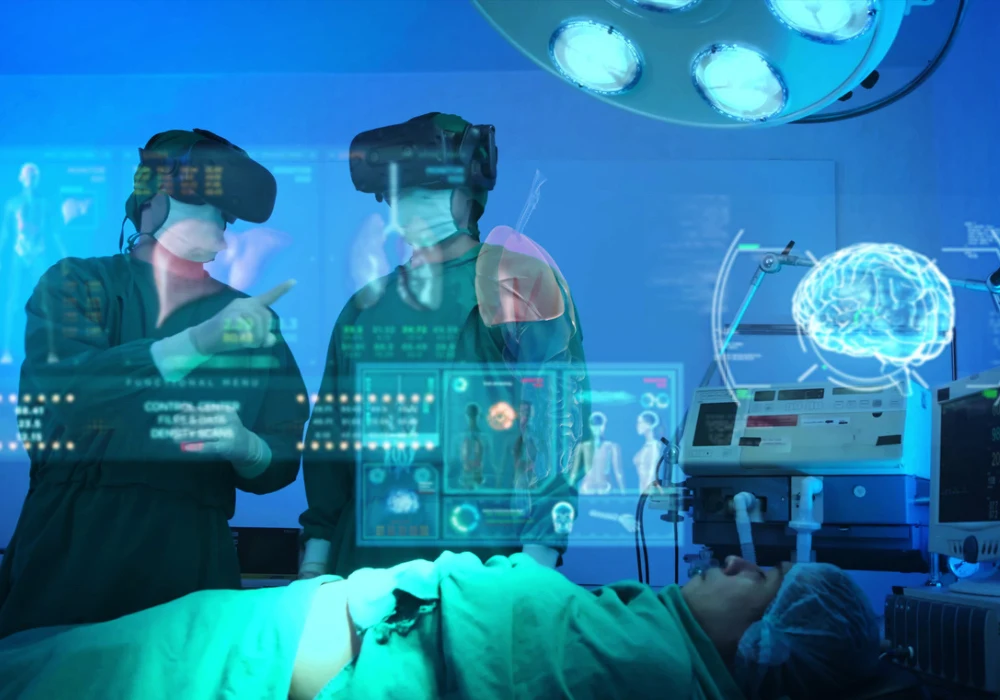As healthcare evolves, operating rooms (ORs) are undergoing a profound transformation. The future of ORs depends on efficiency, patient experience and access, driven by artificial intelligence and smart design. These elements enhance surgical precision, optimise workflows and improve outcomes, particularly in high-volume hospitals where maximising resources is essential. Hospitals that embrace these innovations can streamline surgical procedures, reduce unnecessary delays and ensure that both patients and healthcare professionals benefit from improved safety, coordination and overall care quality.
Enhancing Efficiency Through AI
Efficiency is the backbone of modern ORs, ensuring smooth operations and better patient care. AI-powered systems are revolutionising surgical workflows by predicting surgical demand and adjusting schedules in real time. This reduces patient wait times, enhances resource utilisation and minimises delays. AI-driven predictive analytics help facilities manage high caseloads without compromising care quality, directly improving access to surgical services. Additionally, machine learning models analyse historical data to forecast peak times, allowing hospitals to allocate staff and resources more effectively, thereby increasing overall OR throughput and minimising operational bottlenecks.
AI also plays a crucial role in optimising supply chain management, ensuring that critical surgical supplies are always available when needed. By utilising real-time data to track inventory levels, hospitals can reduce waste and prevent costly disruptions. Automated procurement systems further enhance operational efficiency, ensuring that stock shortages are identified before they occur, allowing proactive restocking and preventing delays that could lead to postponed procedures. This intelligent approach to inventory management contributes significantly to overall OR efficiency, as well-equipped surgical teams can perform procedures without unnecessary interruptions, ultimately benefiting patient care and hospital performance.
Transforming Patient Experience and Outcomes
AI and advanced technologies are not just optimising workflows; they are transforming the patient experience by improving outcomes, reducing surgical risks and enhancing comfort. AI-powered robotic systems enable greater precision and reduced human error, leading to minimally invasive procedures and faster recovery times. These systems provide real-time assistance to surgeons, adjusting interventions based on individual patient anatomy and surgical needs. This level of personalisation ensures that procedures are conducted with the highest accuracy, resulting in reduced post-operative discomfort and shorter hospital stays. In high-risk procedures such as neurosurgery and orthopaedic reconstructions, AI-assisted robotic systems help surgeons navigate complex anatomical structures with enhanced precision, improving overall surgical success rates.
Advanced imaging technologies, such as intraoperative MRI and CT, provide real-time insights, reducing the need for repeat surgeries and enhancing patient confidence in their care. These technologies allow surgeons to make immediate adjustments during procedures, significantly lowering the likelihood of complications. The integration of AI-powered imaging analysis also improves early detection of anomalies, reducing the chances of missed diagnoses that could lead to post-surgical complications. By ensuring that every procedure is guided by the most accurate data available, hospitals can significantly improve surgical outcomes and patient safety.
AI-driven environmental control systems also play a vital role in optimising surgical conditions. Automated climate control maintains ideal humidity, temperature and airflow within the OR, reducing infection risks and enhancing patient safety. In high-volume hospitals, maintaining a consistently sterile environment is crucial, as it allows ORs to transition smoothly between procedures without compromising hygiene standards. AI-powered ventilation systems can detect airborne contaminants and adjust air circulation dynamically, ensuring that the surgical environment remains optimal throughout each procedure.
Related Read: Enhancing Surgical Efficiency with Multimodal AI in Instrument Recognition
Improving Patient Access and Communication
Timely access to surgical care is a pressing challenge in large hospitals. AI-driven tools are improving scheduling, coordination and patient engagement, ensuring a more seamless experience. Real-time patient tracking systems keep families informed about surgical progress, reducing anxiety and increasing transparency. These AI-powered real-time location systems (RTLS) allow hospital staff to monitor patient movement throughout the surgical process, ensuring that each stage is efficiently managed. By automating updates and providing families with real-time notifications, hospitals can foster greater trust in the healthcare system and alleviate concerns about procedure timelines.
AI-driven scheduling systems ensure that patients receive timely preoperative instructions and follow-up care. Automated reminders improve adherence to post-surgical protocols, reducing complications and readmission rates. Patients are more likely to follow recovery guidelines when they receive clear and timely communication, and AI-driven virtual assistants can further support post-operative recovery by answering patient queries, monitoring symptoms and alerting clinicians if early signs of complications arise. This proactive approach to patient engagement enhances care continuity and ensures timely interventions when necessary.
Smart facility designs also contribute to enhanced patient care and operational efficiency. Ceiling-mounted equipment helps optimise space in ORs, reducing clutter and improving access to critical surgical tools. These space-efficient solutions enable surgical teams to work with greater ease, minimising unnecessary movement and improving procedural flow. Integrated smart storage solutions allow quick access to essential instruments, reducing setup times between surgeries and ensuring that operations proceed smoothly without delays. By incorporating these design enhancements, hospitals can create an OR environment that is both highly functional and conducive to efficient surgical care.
The integration of AI, efficiency-driven strategies and patient-centred innovations is reshaping surgical care. By prioritising workflow optimisation, cutting-edge technology and patient access, hospitals can elevate the standard of care while enhancing operational sustainability. The seamless coordination of AI-driven systems ensures that surgeries are performed with minimal delays, while smart facility designs contribute to a more streamlined working environment for healthcare professionals.
The future of ORs lies not just in technological advancements but in how effectively these innovations improve patient experience and access to quality care. By embracing these changes, hospitals can achieve greater surgical precision, enhanced efficiency and a more patient-focused healthcare system. As AI and smart design continue to shape surgical environments, the next generation of ORs will be defined by their ability to balance innovation with patient-centric care, ensuring better health outcomes for all.
Source: HIT Consultant
Image Credit: iStock






